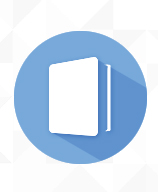| Titre : | Is There Any Effect of Hyperbilirubinemia on Breastfeeding? If Any, at Which Level? (2020) |
| Auteurs : | Nilgün Altuntas, Auteur |
| Type de document : | Article : texte imprimé |
| Dans : | Breastfeeding Medicine (Vol. 15, n°1, Janvier 2020) |
| Article en page(s) : | pp.29-34 |
| Note générale : | L’hyperbilirubinémie affecte-t-elle l'allaitement maternel, et si tel est le cas, à quel niveau ? [titre traduit] |
| Langues: | Anglais |
| Catégories : | Hyperbilirubinémie ; Ictère ; Maladie ; Transmission par le biais du lait maternel |
| Résumé : |
Objectives: We wanted to investigate whether hyperbilirubinemia (significant or physiological) has an effect on breastfeeding, milk intake, infant's wakefulness, and if any, which level of bilirubin affects breastfeeding.
Materials and Methods: Healthy, term, and breastfed babies with significant hyperbilirubinemia who required phototherapy were included in the study (group 1, n = 71). In the neonatal outpatient clinic, a control group was formed from babies with physiological jaundice (group 2, n = 90). All infants were monitored during breastfeeding and breastfeeding was evaluated with breastfeeding assessment tools (IBFAT and LATCH) and milk intake was assessed by test scale. The same examinations were repeated after phototherapy when normal bilirubin levels were reached. Results: Milk intake, Infant Breastfeeding Assessment Tool (IBFAT) (IBFAT total score [IBFATT], IBFAT first item score [IBFAT1], IBFAT sixth item score [IBFAT6]), and LATCH scores were significantly lower in group 1 than the control group (p = 0.001). In group 1, the amount of milk intake, IBFAT and LATCH scores after phototherapy increased significantly compared to prephototherapy values (p = 0.001). Looking at the correlation matrix in the whole study group (groups 1 and 2) there were moderate but very significant negative correlations between bilirubin and milk intake (r = 0.32, p = 0.001), IBFATT (r = 0.47, p = 0.001), IBFAT1 (r = 0.57, p = 0.001), IBFAT6 (r = 0.65, p = 0.001), and LATCH scores (r = 0.49, p = 0.001). In the receiving operating characteristics analysis, the cutoff bilirubin value was found to be 12 mg/dL. Conclusion: Hyperbilirubinemia may have a negative effect on breastfeeding and milk intake. It appears that bilirubin levels above 12, including in babies with physiological jaundice, adversely affect breastfeeding. [résumé de l'auteur] |
| Note de contenu : |
Objectifs de l’étude : nous voulions déterminer si l’hyperbilirubinémie (significative ou physiologique) avait un effet sur l’allaitement maternel, la quantité de lait ingérée, l’éveil du nourrisson et, le cas échéant, déterminer quel niveau de bilirubine affecte l’allaitement maternel.
Méthodes : les nouveau-nés à terme, en bonne santé et allaités atteints d’hyperbilirubinémie significative devant être traités par photothérapie ont été inclus dans l’étude (groupe 1, n = 71). Dans la clinique néonatale externe, un groupe témoin a été formé à partir de nouveau-nés atteints d’ictère physiologique (groupe 2, n = 90). Tous les nourrissons ont été surveillés pendant l’allaitement et ce dernier a été évalué à l’aide d’outils d’évaluation de l’allaitement maternel (IBFAT et LATCH), et la quantité de lait ingérée a été évaluée à l’aide d’un test à échelle. Les mêmes examens ont été répétés après la photothérapie quand des niveaux normaux de bilirubine ont été constatés. Résultats : la quantité de lait ingérée, le Infant Breastfeeding Assessment Tool (IBFAT) (score total de l’IBFAT [IBFATT], score du premier point de l’IBFAT [IBFAT1], score du sixième point de l’IBFAT [IBFAT6]), et scores du LATCH étaient significativement inférieurs dans le groupe 1 par rapport au groupe témoin (p = 0,001). Dans le groupe 1, la quantité de lait ingérée et les scores IBFAT et LATCH après la photothérapie ont augmenté de façon significative par rapport aux valeurs pré-photothérapie (p = 0,001). En examinant la matrice de corrélation dans l’ensemble des groupes d’étude (groupes 1 et 2), il existait des corrélations négatives modérées mais très significatives entre la bilirubine et la quantité de lait ingérée (r = 0,32, p = 0,001), IBFATT (r = 0,47, p = 0,001), IBFAT1 (r = 0,57, p = 0,001), IBFAT6 (r = 0,65, p = 0,001) et score LATCH (r = 0,49, p = 0,001). Dans la mesure de la courbe ROC, la valeur d’inclusion de la bilirubine était de 12 mg/dL. Conclusions : l’hyperbilirubinémie peut avoir un effet négatif sur l’allaitement maternel et sur la quantité de lait ingérée. Il semble que les niveaux de bilirubine au-dessus de 12, y compris chez les nourrissons atteints d’ictère physiologique, affectent défavorablement l’allaitement maternel. [traduction] |
Centre de ressources documentaires sur l’allaitement maternel - CERDAM
 Le catalogue recense l'ensemble de notre fonds documentaire : articles scientifiques, brochures nationales et internationales, ouvrages, travaux de recherche, revues sur le thème de l'allaitement maternel.
Le catalogue recense l'ensemble de notre fonds documentaire : articles scientifiques, brochures nationales et internationales, ouvrages, travaux de recherche, revues sur le thème de l'allaitement maternel.Nous vous aiderons dans vos recherches par mail, téléphone ou dans nos locaux.
Se connecter
Adresse
Centre de ressources documentaires sur l’allaitement maternel - CERDAMIPA - 271 rue Duguesclin
69 003 Lyon
France
contact



